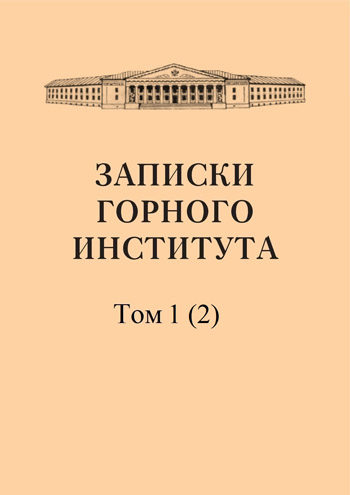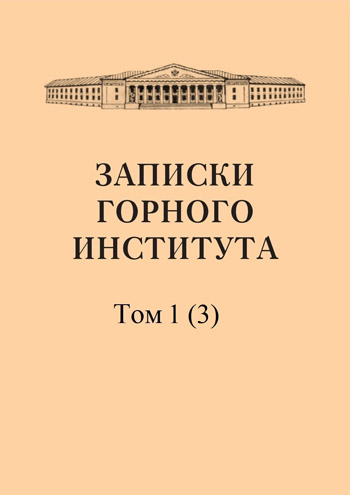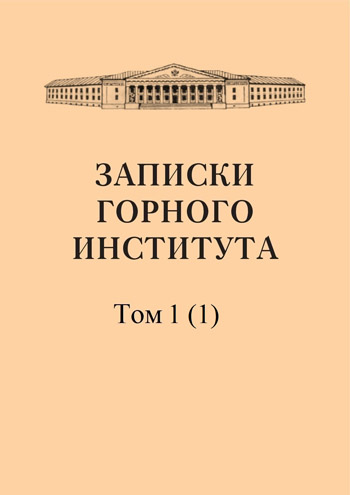-
Date submitted1907-12-17
-
Date accepted1908-02-27
-
Date published1908-06-01
A note about remainder term of the Taylor's series
- Authors:
- I. P. Dolbnya
In order to be useful to the beginners, the author should go into such preliminary details that would be unnecessary in a special mathematical journal (see article). As a result, he obtained a new form of the remainder term.
-
Date submitted1907-12-16
-
Date accepted1908-02-15
-
Date published1908-06-01
New derivation of the Wallis formula
- Authors:
- Ye. К. Mitkevich-Volchassky
This note examines the expression of the length of the arcs of an ellipse and a hyperbola using infinite series (see article). Adding all these equalities and making reductions, we obtain the following formula, which is nothing more than the Wallis formula. The same result could be obtained by finding the arc length of the hyperbola.
-
Date submitted1907-12-01
-
Date accepted1908-02-09
-
Date published1908-06-01
Zinc containing troilite, as a product of factory distillation
- Authors:
- Ye. S. Fedorov
Mining engineer Natsvalov kindly delivered several samples of sublimate crusts during firing of kupfermatte at the Kedabek plant. The specimen was of interest because of its beautifully formed, although mostly in the form of skeletons and growth figures, octahedrons with small blunt cube faces.
-
Date submitted1907-12-08
-
Date accepted1908-02-16
-
Date published1908-06-01
Different solubility of facets and its manifestation in the mineral kingdom
- Authors:
- Ye. S. Fedorov
This difference is manifested in the movement of the dissolved substance in the layer of solution separating the different faces of the crystal of the substance from which the solution is obtained. If there were any doubt about the similarity in this regard of the properties of a natural edge and, for example, a plane of cleavage parallel to it, then the mentioned technique provides a means of resolving it.
-
Date submitted1907-12-26
-
Date accepted1908-03-01
-
Date published1908-06-01
About the limiting cases of the Riemann function
- Authors:
- M. I. Akimov
Let us investigate the limiting cases of the Riemann function. Let us take the differential equation P of the function and consider the functions (see article). Following Riemann's example, we imagine the path of integration in the form of a flexible, stretchable and easily movable thread. As it moves, the special point deforms this path, pushing it in front of itself and never crossing it. With this representation of the integration path from closed curves corresponding to integrals (11), (13), (15), for integrals (16), (18), (20) we obtain open paths in certain directions extending to infinity.
-
Date submitted1907-12-20
-
Date accepted1908-02-25
-
Date published1908-06-01
Sketches on the geometry of spheres
- Authors:
- Ye. S. Fedorov
I will provide the additional theorems on linear collections of the geometry of vectorial spheres and quadratic collections of ordinary spheres. For a detailed description, as well as a comparison of megaspheres of vectorial and ordinary spheres and an overview of the system of parallel vectors, see the article.
-
Date submitted1907-12-09
-
Date accepted1908-02-20
-
Date published1908-06-01
Interesting samples of potassium feldspars in the Museum of the Mining Institute
- Authors:
- Ye. S. Fedorov
First of all, interest was aroused by the huge Bavinsky twin of orthoclase from the vicinity of Kyakhta, depicted in Fig. 1, and not only by the clarity of its formation, but also by the beautiful almandive crystals included in it. A special optical study carried out by V.I. Sokolov showed that the orthoclase substance is germinated by plapoclase around No. 5, representing well-formed polysynthetic twins according to the albite law, and one individual of the twin is concordant with the orthoclase substance.
-
Date submitted1907-12-21
-
Date accepted1908-02-02
-
Date published1908-06-01
The crystalline state is the only internal state of matter
- Authors:
- P. P. Von Weymarn
The so-called colloidal and amorphous states, just like the crystalline ones, are universal properties of matter. The colloidal and amorphous states do not exist as separate states of matter, but represent one of the forms of crystalline formations. The main reasons for the colloidal and amorphous states are rooted exclusively in the directions that the crystallization process takes, due to the large values of both the relative rate of formation of the substance inside the solution and another factor that depends mainly on the complexity of the substance and the viscosity of the medium in which crystallization occurs. The rates of diffusion and reaction in strong jellies are very low and sometimes almost close to zero. The crystal structure is determined by the internal symmetry of the individual masses of the substance.
-
Date submitted1907-12-20
-
Date accepted1908-02-10
-
Date published1908-06-01
Collinear systems in a perspective position, but not involution
- Authors:
- Ye. S. Fedorov
If you have collineations of two systems, then both systems are equal, because both are in the position of involution, and any point a of the system is collinear to the same point a' of the collinear system, regardless of which of these two systems the given point belongs to. But now let’s replace one of the systems with a system similar to it, and take the combined centers of collineation of both systems as the similarity center E. It is clear that under this condition the systems can no longer be brought into the position of involution, and therefore the construction of homologous (collinear) points becomes more complicated, and in any case, for each given point in the collection we will obtain two different homologous points, depending on which of the systems this point applies.
-
Date submitted1907-12-21
-
Date accepted1908-02-24
-
Date published1908-06-01
Several experiments on crystals cut in the shape of spheres
- Authors:
- D. N. Artemyev
In brief reports of the 1st issue of volume I of the Mining Institute Notes” (p. 83), I reported on some experiments in the growth of spheres (hemispheres) prepared from crystals of chrome and potassium alum. Similar experiments were carried out with rock salt (NaCl) crystals from Stassfurt. A welded piece of such salt was turned into a hemisphere with a diameter of 10 m.m. with a central plane (100) and glued with wax onto a glass hemisphere of the same diameter.
-
Date submitted1907-12-10
-
Date accepted1908-02-03
-
Date published1908-06-01
Systems of harmonic segments and vectors
- Authors:
- Ye. P. Fedorov
We outline the possibility of a path for the derivation of an indefinite number of new geometric systems. The main feature of the problems of New Geometry is the indefinite multiplicity in the application of theorems, in contrast to the individuality of conditions in the formulation of problems with which ancient and analytical geometry deals. Problems of a metric nature, for this reason, are not at all within the scope of this discipline; but it would be inaccurate to say that it includes only problems solved by positional constructions (for which reason New Geometry is more often called positional or projective geometry).
-
Date submitted1907-12-16
-
Date accepted1908-02-29
-
Date published1908-06-01
An example of a sharp change in the magnitude of birefringence and the angle of optical axes in a layered epidote grain
- Authors:
- S. P. Ershov
In the quartz-epidote tuff schist, from the Akmola region, there are voids filled either with quartz and epidote, or with turbid grains of feldspar. In the latter, epidote sometimes develops, replacing feldspar from the center to the periphery. One of these epidote grains, shown in the attached figure , has a belt fold. The core of the grain, polarizing with 2nd order yellow and clearly pleochroic, is bordered by hexagonal zones of lesser birefringence (blue and red), almost non-pleochroic; to the periphery of them there remains one sector with colorless layers of low birefringence. With such a difference in birefringence, all these zones are simultaneously extinguished and brightened in crossed nicols, especially clearly when observed in red light, which eliminates dispersion.
-
Date submitted1907-12-17
-
Date accepted1908-02-13
-
Date published1908-06-01
Optical symbols of minerals: pushkinite, kainite, barite-calcite, valuevite and kyanite
- Authors:
- V. I. Sokolov
Prof. Fedorov proposed a method for determining the nature of the dispersion of optical axes on a universal table and outputting the optical symbol of a mineral. Currently, at the Mineralogical Institute, a number of measurements have been taken using this method. This note presents the results of the first (still few) observations.


